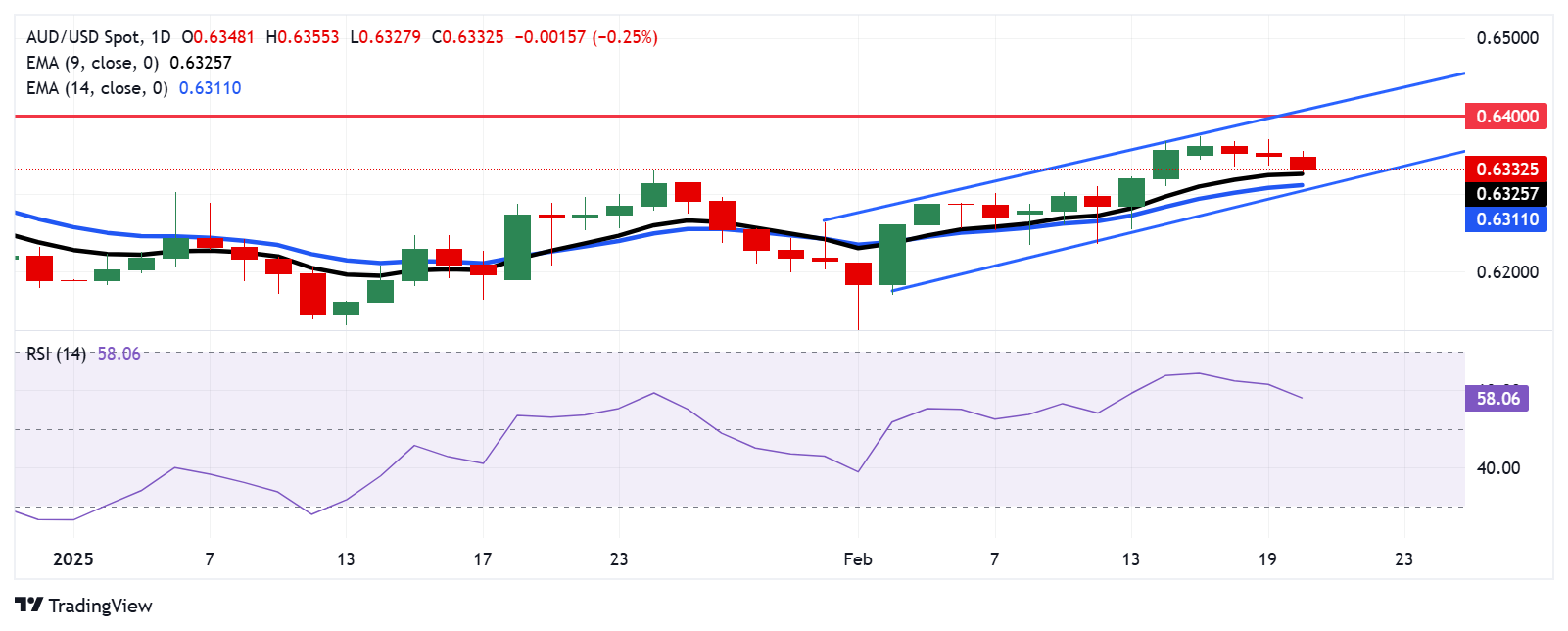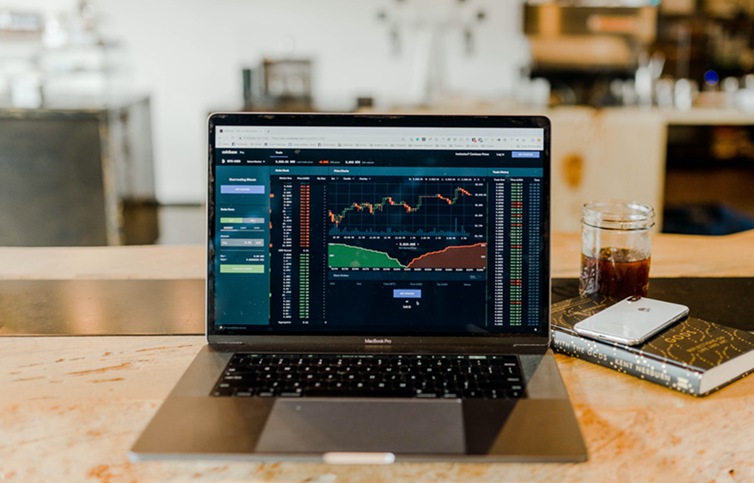Australian Dollar depreciates following employment data, China’s policy decision

- The Australian Dollar depreciates due to the latest Trump tariffs and cautious FOMC Minutes.
- Australia’s Unemployment Rate increased to 4.1% in January from 4.0% in December, as expected.
- President Trump has confirmed plans to impose a 25% tariff on imports of automobiles, semiconductors, and pharmaceutical products.
The Australian Dollar (AUD) extends its losses against the US Dollar (USD) following the release of domestic employment data and China’s interest rate decision on Thursday. However, the AUD/USD pair faced headwinds as risk aversion increased due to concerns over the latest tariffs from US President Donald Trump and a cautious tone in the Federal Open Market Committee (FOMC) Minutes from January’s policy meeting.
On Thursday, the Australian Bureau of Statistics (ABS) reported that Australia’s seasonally adjusted Unemployment Rate rose to 4.1% in January from 4.0% in December, aligning with market expectations. Additionally, Employment Change came in at 44K for January, down from a revised 60K in December (previously 56.3K), but still exceeding the consensus forecast of 20K.
The People’s Bank of China (PBOC) opted to keep its Loan Prime Rates (LPRs) unchanged, with the one-year and five-year rates remaining at 3.10% and 3.60%, respectively.
The AUD faced downward pressure after the Reserve Bank of Australia (RBA) lowered its Official Cash Rate (OCR) by 25 basis points to 4.10% on Tuesday—the first rate cut in four years. RBA Governor Michele Bullock acknowledged the impact of high interest rates but cautioned that it was too soon to declare victory over inflation. She also emphasized the strength of the labor market and clarified that future rate cuts are not guaranteed, despite market expectations.
Australian Dollar declines due to Trump tariffs, FOMC Minutes
- The US Dollar Index (DXY), which measures the USD against six major currencies, hovers around 107.00. Meanwhile, US Treasury yields stand at 4.26% for the 2-year note and 4.52% for the 10-year note at the time of writing.
- The latest Federal Open Market Committee (FOMC) Meeting Minutes reaffirmed the decision to keep interest rates unchanged in January. Policymakers emphasized the need for more time to assess economic activity, labor market trends, and inflation before considering any rate adjustments. The committee also agreed that clear signs of declining inflation are necessary before implementing rate cuts.
- President Trump has confirmed that a 25% tariff on pharmaceutical and semiconductor imports will take effect in April. Additionally, he reaffirmed that auto tariffs will remain at 25%, further escalating global trade tensions.
- "So far, the dollar has tracked the path it had during the previous Trump administration...and we can pretty much agree that Trump is doing exactly what he said," said Chester Ntonifor, chief FX and global fixed income strategist, at BCA Research in Montreal.
- Federal Reserve Bank of Chicago President Austan Goolsbee stated late Wednesday that while inflation has declined, it remains elevated. Goolsbee emphasized that interest rates can be lowered further once inflation falls to a more acceptable level.
- San Francisco Fed President Mary Daly said on Tuesday that prospects of further rate cuts in 2025 remain uncertain despite an overall positive lean to US economic factors. Philadelphia Fed President Patrick Harker emphasized support for maintaining a steady interest rate policy, noting that inflation has remained elevated and persistent in recent months.
Technical Analysis: Australian Dollar tests nine-day EMA support
The AUD/USD pair hovers around 0.6330 on Thursday, trading within an ascending channel that suggests a bullish market sentiment. The 14-day Relative Strength Index (RSI) remains above 50, reinforcing the positive outlook.
On the upside, the AUD/USD pair could challenge the key psychological resistance at 0.6400, which aligns with the channel's upper boundary at 0.6410.
Immediate support is found at the nine-day Exponential Moving Average (EMA) of 0.6326, followed by the 14-day EMA at 0.6311. A stronger support zone lies near the channel's lower boundary at 0.6300.
AUD/USD: Daily Chart

Australian Dollar PRICE Today
The table below shows the percentage change of Australian Dollar (AUD) against listed major currencies today. Australian Dollar was the weakest against the Japanese Yen.
| USD | EUR | GBP | JPY | CAD | AUD | NZD | CHF |
|---|---|---|---|---|---|---|---|---|
USD |
| -0.03% | 0.00% | -0.62% | 0.04% | 0.14% | 0.01% | -0.13% |
EUR | 0.03% |
| 0.02% | -0.63% | 0.07% | 0.16% | 0.04% | -0.12% |
GBP | -0.00% | -0.02% |
| -0.64% | 0.04% | 0.13% | 0.01% | -0.13% |
JPY | 0.62% | 0.63% | 0.64% |
| 0.68% | 0.77% | 0.60% | 0.49% |
CAD | -0.04% | -0.07% | -0.04% | -0.68% |
| 0.11% | -0.03% | -0.16% |
AUD | -0.14% | -0.16% | -0.13% | -0.77% | -0.11% |
| -0.12% | -0.28% |
NZD | -0.01% | -0.04% | -0.01% | -0.60% | 0.03% | 0.12% |
| -0.15% |
CHF | 0.13% | 0.12% | 0.13% | -0.49% | 0.16% | 0.28% | 0.15% |
|
The heat map shows percentage changes of major currencies against each other. The base currency is picked from the left column, while the quote currency is picked from the top row. For example, if you pick the Australian Dollar from the left column and move along the horizontal line to the US Dollar, the percentage change displayed in the box will represent AUD (base)/USD (quote).
Australian Dollar FAQs
What key factors drive the Australian Dollar?
One of the most significant factors for the Australian Dollar (AUD) is the level of interest rates set by the Reserve Bank of Australia (RBA). Because Australia is a resource-rich country another key driver is the price of its biggest export, Iron Ore. The health of the Chinese economy, its largest trading partner, is a factor, as well as inflation in Australia, its growth rate and Trade Balance. Market sentiment – whether investors are taking on more risky assets (risk-on) or seeking safe-havens (risk-off) – is also a factor, with risk-on positive for AUD.
How do the decisions of the Reserve Bank of Australia impact the Australian Dollar?
The Reserve Bank of Australia (RBA) influences the Australian Dollar (AUD) by setting the level of interest rates that Australian banks can lend to each other. This influences the level of interest rates in the economy as a whole. The main goal of the RBA is to maintain a stable inflation rate of 2-3% by adjusting interest rates up or down. Relatively high interest rates compared to other major central banks support the AUD, and the opposite for relatively low. The RBA can also use quantitative easing and tightening to influence credit conditions, with the former AUD-negative and the latter AUD-positive.
How does the health of the Chinese Economy impact the Australian Dollar?
China is Australia’s largest trading partner so the health of the Chinese economy is a major influence on the value of the Australian Dollar (AUD). When the Chinese economy is doing well it purchases more raw materials, goods and services from Australia, lifting demand for the AUD, and pushing up its value. The opposite is the case when the Chinese economy is not growing as fast as expected. Positive or negative surprises in Chinese growth data, therefore, often have a direct impact on the Australian Dollar and its pairs.
How does the price of Iron Ore impact the Australian Dollar?
Iron Ore is Australia’s largest export, accounting for $118 billion a year according to data from 2021, with China as its primary destination. The price of Iron Ore, therefore, can be a driver of the Australian Dollar. Generally, if the price of Iron Ore rises, AUD also goes up, as aggregate demand for the currency increases. The opposite is the case if the price of Iron Ore falls. Higher Iron Ore prices also tend to result in a greater likelihood of a positive Trade Balance for Australia, which is also positive of the AUD.
How does the Trade Balance impact the Australian Dollar?
The Trade Balance, which is the difference between what a country earns from its exports versus what it pays for its imports, is another factor that can influence the value of the Australian Dollar. If Australia produces highly sought after exports, then its currency will gain in value purely from the surplus demand created from foreign buyers seeking to purchase its exports versus what it spends to purchase imports. Therefore, a positive net Trade Balance strengthens the AUD, with the opposite effect if the Trade Balance is negative.





